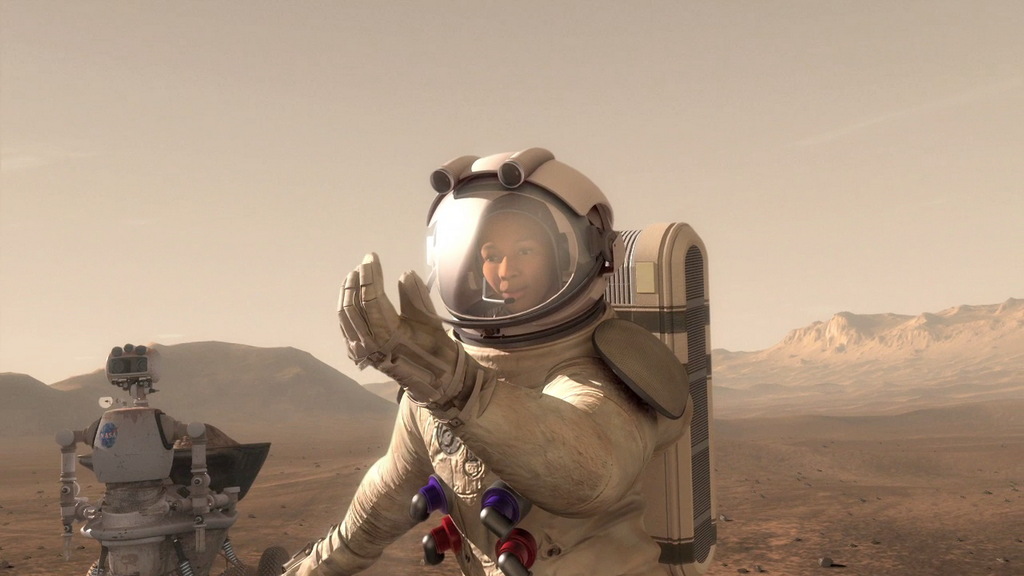
Humanity will have to go far afield to notch another spaceflight achievement with the cultural heft of Apollo 11.
The epic first moon landing, which occurred on July 20, 1969, inspired a generation, spurring kids around the world to care about science and space exploration. Indeed, many of us are taking some time this week to celebrate the 50th anniversary of the Apollo 11 mission and take stock of its legacy.
Similar fanfare will likely attend the semicentennial of the first crewed Mars landing, which NASA aims to pull off in the 2030s, agency chief Jim Bridenstine said.
- Relive the Apollo 11 Moon Landing Mission in Real Time
- Apollo 11 Moon Landing Giveaway with Simulation Curriculum & Celestron!
- Lunar Legacy: 45 Apollo Moon Mission Photos
- Apollo 11 at 50: A Complete Guide to the Historic Moon Landing
"The president has said that we need to go to Mars," Bridenstine said, referring to President Donald Trump, during a teleconference with reporters today (July 15).
"We need to send humans to Mars. We need to put an American flag on Mars — that's the goal," he added. "I think when that stunning achievement occurs, it will inspire a new generation, just like Apollo has inspired our generation."
NASA's crewed Mars plans include a return to the moon under an ambitious exploration program known as Artemis. The agency plans to use the moon as a steppingstone, where NASA can learn and test the skills required for the long trip to the Red Planet.
One of the biggest Artemis milestones is scheduled for 2024, when NASA aims to put two astronauts down near the moon's south pole. One of those explorers will be a woman, agency officials have said — the first ever to set foot on the moon. (All 12 Apollo moonwalkers were men.)
Get the Space.com Newsletter
Breaking space news, the latest updates on rocket launches, skywatching events and more!
This crewed lunar return was originally targeted for 2028, but Vice President Mike Pence officially accelerated the timetable during a speech this past March. The increased urgency recently spurred Bridenstine to shake up NASA's human-exploration team, reassigning longtime leader Bill Gerstenmaier and a top deputy.
It's unclear how much it will cost to put boots back on the moon, but Bridestine said today that the agency may well be able to do it for "significantly less" than $20 billion. He also stressed that a crewed Mars mission by the early to mid-2030s is still feasible, despite a recent independent report suggesting otherwise.
"I am not willing to rule out 2033 at all," Bridenstine said.
- The Apollo Moon Landings: How They Worked (Infographic)
- How the Apollo 11 Moon Landing Worked (Infographic)
- NASA's Moonwalking Apollo Astronauts: Where Are They Now?
Mike Wall's book about the search for alien life, "Out There" (Grand Central Publishing, 2018; illustrated by Karl Tate), is out now. Follow him on Twitter @michaeldwall. Follow us on Twitter @Spacedotcom or Facebook.
Join our Space Forums to keep talking space on the latest missions, night sky and more! And if you have a news tip, correction or comment, let us know at: community@space.com.

Michael Wall is a Senior Space Writer with Space.com and joined the team in 2010. He primarily covers exoplanets, spaceflight and military space, but has been known to dabble in the space art beat. His book about the search for alien life, "Out There," was published on Nov. 13, 2018. Before becoming a science writer, Michael worked as a herpetologist and wildlife biologist. He has a Ph.D. in evolutionary biology from the University of Sydney, Australia, a bachelor's degree from the University of Arizona, and a graduate certificate in science writing from the University of California, Santa Cruz. To find out what his latest project is, you can follow Michael on Twitter.









